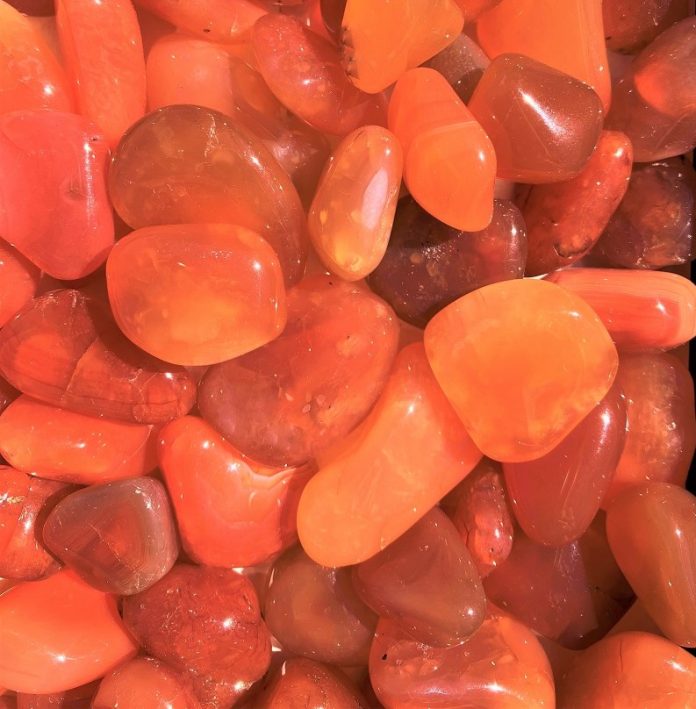
Carnelian is a beautiful reddish-orange chalcedony mineral that graces many collections. Here are the top ten facts about this popular specimen.
1. What is Carnelian?
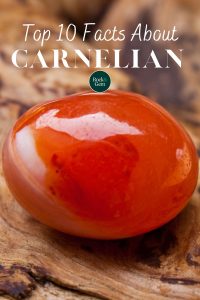
Carnelian is a cryptocrystalline variety of quartz known as chalcedony, or agate. It ranges in color from yellow to orange to red and reddish-brown. Most prized are warm oranges and vivid reds. It forms as low-temperature deposits that fill seams, cracks or cavities and is often found as nodules. At Mohs hardness 6.5 to 7, with nice translucency and luster, it’s a fine lapidary stone.
2. Why is Carnelian Red?
The reddish-brown color of an old nail comes from iron rusting or oxidizing. Similarly, chalcedony is colored red if infiltrated by solutions bearing iron oxides during formation.
A caution! You may think you’ve found a beautiful red carnelian, but often a red exterior is only skin deep. When cut, the interior may be yellow. This reflects different concentrations of iron oxides that were in the solution as the nodule formed.
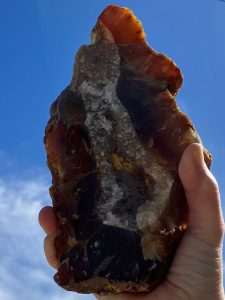
3. How Was Carnelian Named?
Per one source, “carnelian” comes from the Latin word carnis, or “flesh” because of its red color. Another source claims it comes from the Latin word cornum, referring to the glossy red cornelian cherry.
4. Is it Carnelian? Or is it Sard?
In ancient times, carnelian was referred to as sard. It is a gemstone mentioned in the Bible. The Roman naturalist Pliny the Elder said this referred to the Lydian city of Sardis in present-day Turkey. Others say it came from the Persian word sered meaning “yellowish-red.” Then there’s the Greek word sarx, meaning “flesh.”
Sard is russet-colored, or deep dark brown with a reddish-orange tinge. Remove the brown and you have carnelian. The difference between carnelian and sard is a matter of degrees, and the two names are sometimes used interchangeably. The amount of iron oxide influences the color range.
5. How Does Sardonyx Differ from Sard & Carnelian?
Forget carnelian versus sard. We also have sardonyx. This is a striped version of carnelian or sard with bands of white chalcedony alternating with red/brown stripes. Onyx is a Greek word meaning “nail or claw,” and sardonyx was said to resemble a fingernail with a white tip above a pink base. The stone has long been valued for the color contrast between layers.
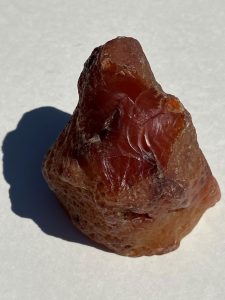 6. I Bought a Red Stone. Is it Carnelian?
6. I Bought a Red Stone. Is it Carnelian?
Dull light-colored chalcedony can be stained and dyed with iron salts. One source claims many stones sold on the market as carnelian are actually artificially stained chalcedony. Buyer beware!
7. Where Can I Find Carnelian?
It’s said the finest carnelian is from India, and the face of the Taj Mahal bears red flowers crafted from inlaid carnelian. But carnelian has been sourced from many nations including Brazil, Mexico, Saudi Arabia, Sri Lanka, Thailand, Australia and Germany. Material from Madagascar is currently prominent on the market. In the U.S., Oregon is notable, with nodules found on coastal beaches and in river gravels.
8. Did the Ancients Use Carnelian?
Because of its lush colors and ease in crafting, carnelian has been used in jewelry since at least the 4th millennium B.C. Carnelian beads have been found in Bulgarian grave sites from the Early Neolithic 8,000 years ago. In 2000 B.C., Egyptians used it for beads and cabochons, often set in gold alongside lapis. Ancient Greeks and Romans used it for intaglios (engraved stones) and set in gold as signet rings for sealing letters with wax.
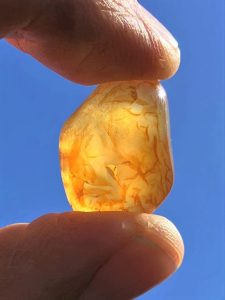
9. What Lore & Legend Surrounds Carnelian?
The traditional birthstone for July is ruby, but one alternative stone is carnelian. The Zodiac birthstone for Virgo is peridot, but also carnelian. And carnelian shows up in Judeo-Christian religious traditions. For instance, high priests wore a gold filigree breastplate adorned with 12 stones, including sard, to represent the 12 tribes of Israel.
Because they were the color of blood, in ancient and medieval times red stones were considered talismans associated with life and were believed to attract the attention of good spirits while warding off evil. Carnelian was believed to calm tempers and to “still the blood” from rage. On the other hand, while stilling the blood, carnelian was also believed to promote courage in battle and to stir eloquence within shy speakers. Today’s New Age practitioners of healing stones say it purifies the blood, provides strength and soothes emotions.
10. Is Carnelian Still Used Today?
Just like the ancients, lapidary artists today value carnelian, whether slabbed and domed as cabs to set into earrings and pendants or to craft beads. It’s also carved and incorporated into intarsia. Colorfully translucent, hard and durable, and taking a glossy polish, carnelian has stood the test of time.
Rough or tumble-polished pieces make great display specimens.
This story about carnelian previously appeared in Rock & Gem magazine. Click here to subscribe. Story and photos by Jim Brace-Thompson.















